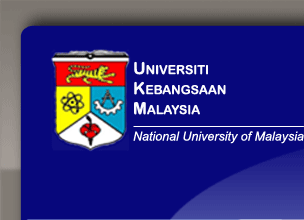High Performance Simulation for Brain Tumours Growth Using Parabolic Equation on Heterogeneous Parallel Computer System
Pheng H. S., Norma Alias and Norfarizan Mohd Said
ABSTRACT
Brain tumour is one of the prevalent cancers in the world that lead to death. Based on the present knowledge of the properties of gliomas, mathematical models has been developed by researchers to quantify the proliferation and invasion dynamics of glioma within anatomically accurate heterogeneous brain tissue. This paper focuses on the implementation of parallel algorithm for the simulation of brain tumours growth using one dimensional parabolic equation, design on a distributed parallel computer system. The numerical finite-difference method is focused on a design of a platform for discretizing the parabolic equations. The result of finite difference approximation using explicit, Crank-Nicolson and fully implicit methods will be presented graphically. The implementation of parallel algorithm based on parallel computing system is used to capture the growth of brain tumour. Parallel Virtual Machine (PVM) is emphasized as communication platform in parallel computer systems. The software system functions to enable a collection of heterogeneous computers to be used as synchronize and flexible concurrent computational resource. The parallel performance measurement will be analyzed from the aspect of speedup, efficiency, effectiveness and temporal performance.
Keywords: Parallel computer system, parallel virtual machine, mathematical model, brain tumour growth, Crank-Nicolson method.
ABSTRAK
Barah otak antara barah utama yang menyumbang kepada peningkatan kematian disebabkan kanser. Fenomena ini menarik minat pengkaji daripada pelbagai bidang untuk mendalaminya, termasuklah ahli-ahli matematik. Terdapat beberapa model matematik telah dibangunkan berdasarkan pengetahuan tentang ciri-ciri sel barah dan pertumbuhannya. Kajian ini fokus kepada penggunaan teknik algoritma selari dalam meyelesaikan dan menggambarkan pertumbuhan sel barah otak menggunakan persamaan parabolik satu dimensi. Kaedah penghampiran beza terhingga, dikaji dan digunakan dalam pendiskretan persamaan parabolik. Kaedah tersirat, tak tersirat, dan Crank-Nicolson untuk penghampiran beza terhingga dianalisis dan hasilnya ditunjukkan dalam bentuk graf. Dalam kajian ini, algoritma selari dilaksanakan menggunakan sistem pengkomputeran selari. Mesin Selari Ingatan Maya iaitu PVM digunakan sebagai platfom komunikasi dalam sistem komputer selari. PVM merupakan satu perisian yang membolehkan sekumpulan komputer heterogenus digunakan sebagai satu sumber pengiraan yang bekerjasama secara teratur dan fleksibel serta dihubungkan oleh satu sistem rangkaian. Prestasi algoritma selari juga dianalisis dari aspek kecepatan, kecekapan, keberkesanan dan masa pelaksanaan.
Katakunci: Sistem pengkomputeran selari, mesin maya selari, permodelan matematik, pertumbuhan barah otak, kaedah Crank-Nicolson.



